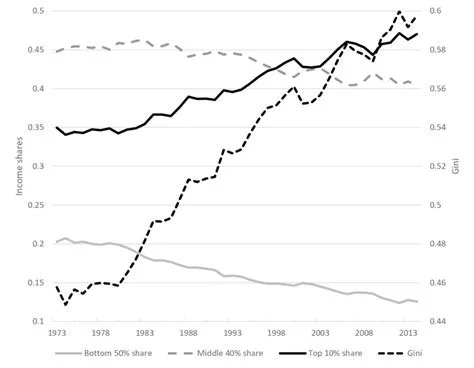Tetris with Word and Phrase
All was going smoothly during a routine conversation “homing from work” (read as: connecting via video chat in my multipurpose office/study/kitchen/dining room/bedroom) when I caught myself. My sentences were chock-full of fatuous phrases like “Living the dream,” “Doing well, yourself,” and “Same old, same old.” I was speaking but not saying. There were no hiccups in the conversational dance, no surprises or issues during the dialogue, however, something felt decidedly off.
For quite some time, I couldn’t put my finger on it. Nothing whatsoever seemed awry or problematic, but, ironically, that turned out to be the very issue. Most conversation seemed stale, easy, and facile. Whether a phone call or a FaceTime, a socially distant happen-upon or a conversation over dinner, every word, phrase, and question fell naturally, as though all parties shared a script and were conducting a read-through. It was Kabuki theater—heavy on peacocking, light on depth and content.
Over the coming weeks, the more I paid close attention and truly listened to any conversational exchange, the more I found most individuals making sound but not imparting meaning. Much like a tennis rally with a flat, worn ball, counterparts lobbed canned expressions back and forth, making sure to keep the ball within the neat lines of an unspoken but mutually agreed upon safe court of dialogue.
I started wondering:
How much of what we say are tired tropes, overused expressions, and banal clichés?
How often do we leverage and synergize our way through our days, using words that mean nothing to attempt to convey everything?
How much of what we say do we truly mean?
What is net new, extemporaneous, true, passionate speech?
I considered most of what was nominally deemed conversation mere gilding instead of gold. Shallow and superficial, this gilding was hoop jumping writ small: the use of trivial expressions, idioms, and bromides to avoid any depth of meaning.
In my mind, the conversational gold standard is when a duo dances and tunes into the beat of the discussion instead of strutting to further an agenda or hear one’s own voice. It is a home-cooked meal, imbued with effort and toil driven by love, versus a frozen dinner heated up in a dingy, dinging microwave. The former is nourishment, the latter can hardly be called a meal, just empty calories. In the moment, perhaps both whet our appetite, taste good, and make us feel full, however, gilding—overflowing with verbal MSG—leaves us ravenously hungry in a short while.
In this day and age, I feel as though we conflate shared soliloquy with meaningful conversation. We seldom struggle with language—whittling words and hand-crafting phrases—as proper conversational artisans should. Instead, we follow well-worn thoroughfares, zipping along rutted routes fueled by trite banter and tired phrases.
It seems as though the corporatization of conversation is at hand: verbal mass production has supplanted delicate, intricate spoken handicraft. We assemble our sentences and responses with the heavy machinery of tried and tested stock parts that mask meaning and hastily move empty dialogue forward.
In short, I believe we play Tetris with our words and phrases.
Hemmed in by the walls of our conversational comfort zones, we furiously attempt to fit our words and phrases into perfect notches in order to get to the proverbial next level. We play with set pieces (e.g. those canned lines supplied by autocomplete on our phones and in our emails) in an environment riddled with strict rules and social norms, attempting to score points with preset inputs.
It is consensual euphemism that is mindless, rote, and banal.
Nota Bene: There’s good reason why I stick to writing and don’t dabble in design.
Why do we do this?
A recent article from The New York Times referencing the closeness-communication bias offers a hint:
“Too often spouses, and also parents with their children, reduce conversations to logistics such as what to have for dinner, whose turn it is to do the laundry, or when to leave for soccer practice. Friends might run down their latest accomplishments and activities. What often gets left out is what is really on people’s minds — their joys, struggles, hopes and fears. Sometimes people keep conversation light with friends and family because they assume they already know what’s going on, but also, they may be afraid of what they might learn.”
That last line hit me squarely in the gut:
“[T]hey may be afraid of what they might learn.”
I found deep wisdom in that tidbit. In my mind, we don’t listen (and thus converse) because we’re keenly fearful. Instead, we lay opaque smokescreens to disguise our true feelings, struggles, and desires. By keeping things light, superficial, and clerical, we ensure that challenging, uncomfortable truths (not only concerning others, but also about our very selves) are kept at arm's-length. After all, banter never stumbled upon philosophical revelation or uncovered harsh realities. To me, this is the conversational equivalent of our discomfort maintaining sustained eye contact with one another.
Obsessed with keeping up pretenses, we conflate true human suffering and vulnerability with weakness. To admit something is wrong or awry in our lives is to be fundamentally flawed. Instead, we fruitlessly attempt to white-knuckle or pretend our problems away.
At the point where we can all confidently declare our problems, we create knowledge of the collective vulnerability and suffering that we as humans cannot escape. Contrary to popular opinion, this suffering is not a bad thing because it leaves room for hope: that beautiful and basic human virtue that transforms every action, every step into a celebration of who we are and what we can become. Together we must derive strength by conquering what ails us, and compelling one another to realize that surrender is simply not an option. At the point where we ascertain that we are not alone, we are not islands, we triumph insofar as we have found a home amongst our fellow humans.
C.S. Lewis captured this sentiment beautifully in his warmly personal book, The Four Loves:
“Friendship arises out of mere Companionship when two or more of the companions discover that they have in common some insight or interest or even taste which the others do not share and which, till that moment, each believed to be his own unique treasure (or burden). The typical expression of opening Friendship would be something like, "What? You too? I thought I was the only one." ... It is when two such persons discover one another, when, whether with immense difficulties and semi-articulate fumblings or with what would seem to us amazing and elliptical speed, they share their vision - it is then that Friendship is born. And instantly they stand together in an immense solitude.”
Don’t play Tetris with your words and phrases, instead dance to the beat of true conversation. Shirk words that mime meaning; grapple with those that express deep-seated hopes, fears, and struggles. Embrace the fracas of true, unrestrained dialogue. For it is via the heat and pressure of a lively exchange that we may form diamonds from the rough of our lives.
I leave you with the relevant, sage words of late Irish poet, author, and priest, John O’Donohue. They are best read or imagined with a gruff brogue:
“You have to ask yourself, ‘When is the last time that you had a great conversation?’ A conversation which wasn’t just two intersecting monologues, which is what passes for conversation a lot in this culture. But when had you last a great conversation in which you overheard yourself saying things that you never knew you knew, that you heard yourself receiving from somebody words that absolutely found places within you that you thought you had lost and a sense of an event of a conversation that brought the two of you on to a different plain, and then fourthly, a conversation that continued to sing in your mind for weeks afterwards.”





